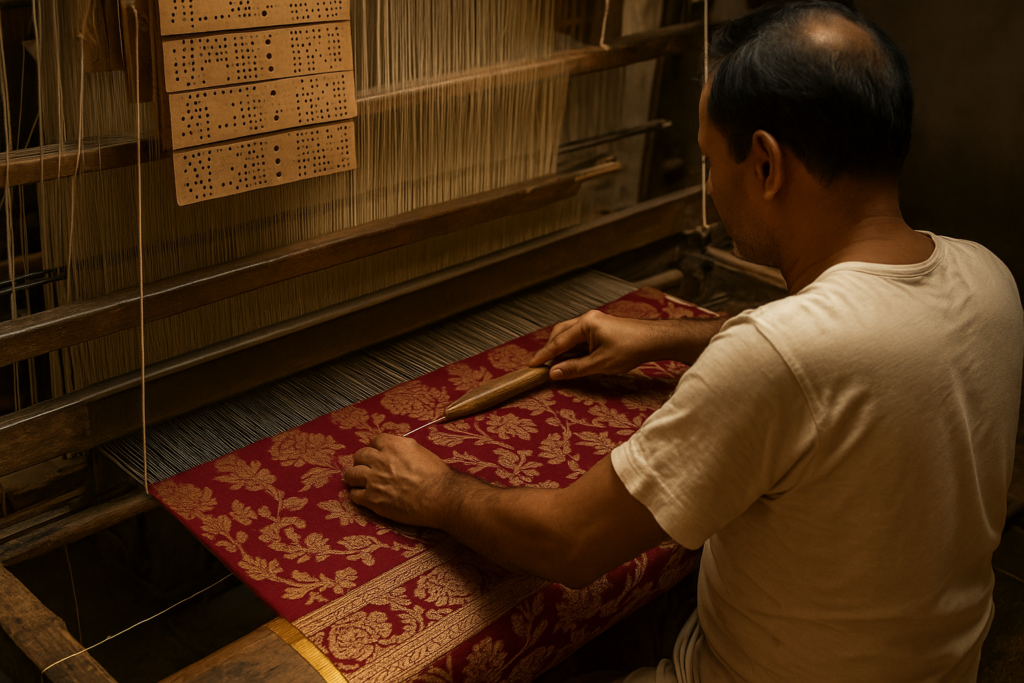
Banarasi sarees, cherished for their luxurious silk and exquisite zari work, represent the finest of Indian handloom artistry. But what truly makes a Banarasi saree so special lies in its intricate manufacturing process—a journey that blends tradition, craftsmanship, and cultural heritage. In this blog, we walk you through each step of how a Banarasi saree is made.
1. Sourcing and Preparing Raw Silk
The process begins with sourcing pure silk yarns, primarily from southern India. This silk is thoroughly washed and degummed to ensure it’s free from impurities, giving it a smooth, lustrous finish. Only the finest Katan silk is used for traditional Banarasi sarees.
2. Designing the Pattern (Naksha Making)
Once the silk is ready, artisans begin designing the motifs on graph paper using traditional methods. This process is called Naksha making, and the designs usually feature:
- Mughal-inspired patterns
- Floral and foliate motifs (kalga, bel)
- Peacocks, paisleys, and mandalas
Each design is unique and may take days to finalize.
3. Punch Card Creation for the Jacquard Loom
The finalized design is translated into punch cards—small cardboard pieces with holes punched to guide the loom’s movement. These are fed into a Jacquard loom to control the weaving of patterns row by row.
Thousands of punch cards are used for a single saree design.
4. Dyeing the Silk Yarns
The silk threads are then dyed in vibrant colors as per the design requirement. Traditional methods use natural and azo-free dyes, ensuring eco-friendliness and brilliance of color.
5. Weaving on the Handloom
Weaving is where the real magic begins. The weaver, assisted by family members or co-artisans, interlaces the dyed silk threads with zari threads (gold or silver-coated) on the loom. This meticulous weaving process can take 15 to 45 days or more, depending on the intricacy of the design.
Types of weaving include:
- Jangla – Dense floral motifs
- Tanchoi – Intricate patterns with no zari
- Cutwork – Simplified floral patterns
- Butidar – Small, repetitive motifs across the body
6. Finishing Touches and Quality Checks
After weaving, the saree undergoes:
- Polishing with a roller to enhance shine
- Cutting and finishing of loose threads
- Final quality inspection for defects
Once approved, the saree is ready to be packed and shipped.
7. Artisan Legacy and Sustainability
Each Banarasi saree is a product of generations of skill. Many weavers work within family-owned units, often combining heritage techniques with modern innovations. Supporting Banarasi sarees also means supporting sustainable and ethical fashion.
Conclusion
From the hum of the loom to the shimmer of zari, the manufacturing process of Banarasi sarees is a beautiful narrative of craftsmanship and culture. Each thread tells a story, making every saree a wearable piece of art and tradition.
Whether you’re a fashion lover, a bride-to-be, or an admirer of Indian textiles, knowing the process behind a Banarasi saree deepens your appreciation for this timeless attire.